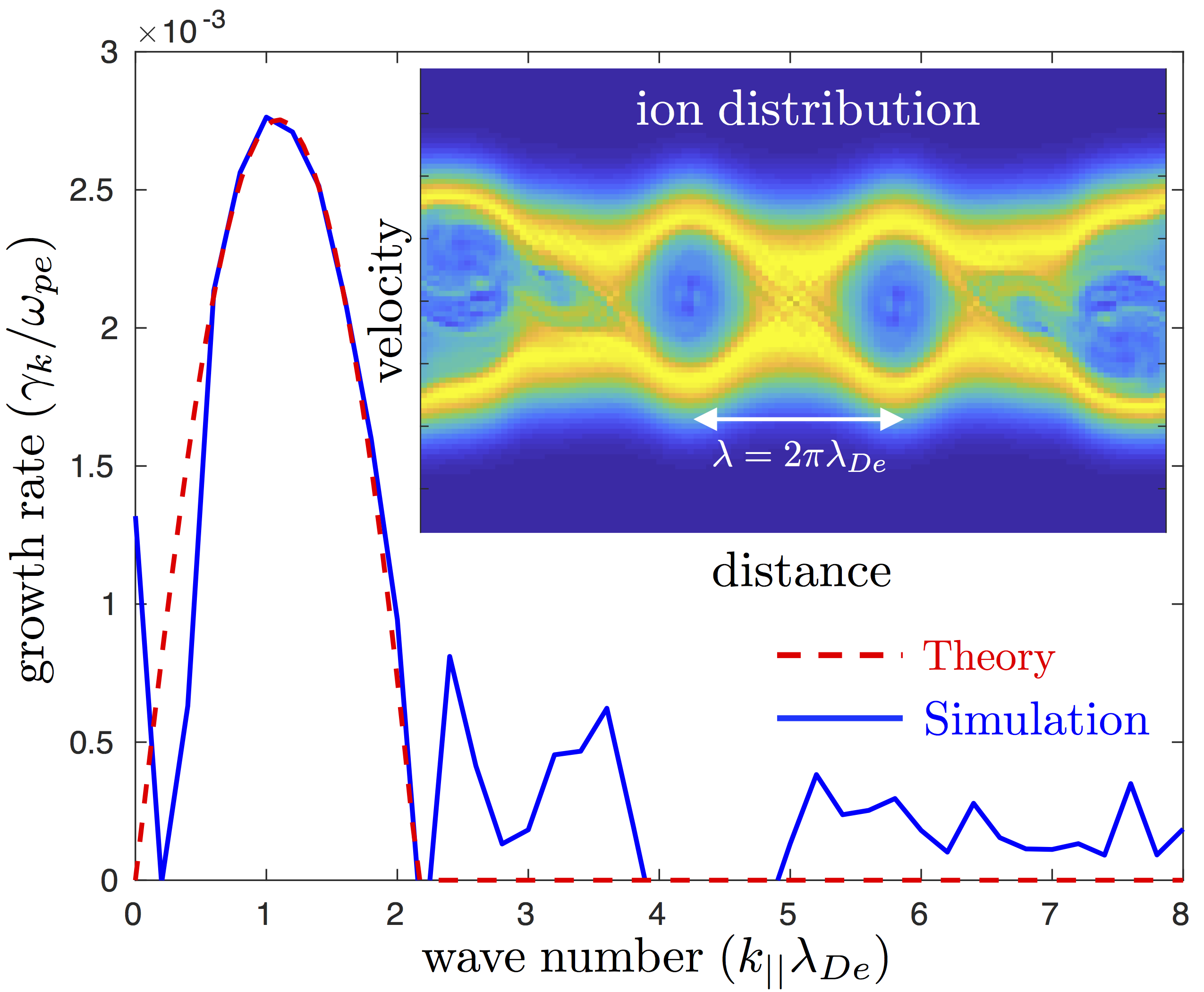Debojyoti Ghosh (17-ERD-081)
Executive Summary
Our project focuses on developing, testing, and validating a novel software tool that will, for the first time, provide efficient simulation of three-dimensional, multifluid, plasma interactions that occur in high-energy-density physics research and laboratory simulations of astrophysical shocks. This software tool will support mission-related research in high-energy-density science and Inertial Confinement Fusion.
Project Description
Multifluid plasma flows occur in Inertial Confinement Fusion (ICF), high-energy-density (HED) physics, and astrophysics; however, current multi-species, single-fluid solvers are incapable of modeling them. Kinetic solvers are too expensive for experimental length/time scales. Additionally, new essential physical effects, such as Rayleigh-Taylor and plasma kinetic instabilities, occur only in two or more dimensions. Also, the Laboratory's multi-species, single-fluid models are incapable of capturing interpenetration effects without the addition of poorly characterized species-diffusion models. However, capabilities to address this problem with more general fluid models are within reach. We are developing a novel, three-dimensional, multifluid simulation capability to model multi-species plasma interactions and physical processes such as interpenetration and species separation. We are also developing capabilities to model localized kinetic effects. Our approach builds on recently developed numerical technologies, scientific computing libraries used by the Laboratory, and our own expertise in computational methods, fluid dynamics, and plasma physics.
The software tools we develop during this project will extend the Laboratory’s predictive simulations capability to model ICF experiments and help provide theoretical insights on plasma interpenetration and species separation dynamics. The open-source code for quasi-linear kinetic models we develop will enable the Laboratory and the scientific community to simulate multifluid flows with localized kinetic effects for future research. Overall, the results of this project will be cutting-edge contributions in the field of computational plasma physics.
Mission Relevance
This project supports NNSA's goal of advancing the science, technology, and engineering competencies that are the foundation of the NNSA's mission. It also supports Lawrence Livermore’s high-energy-density science core competency by contributing to the goal of providing international leadership in studying and controlling matter under extreme conditions of temperature and pressure, and by enhancing the Laboratory's leadership role in plasma physics simulation capabilities as well as by providing a novel research code for accurately simulating and investigating the plasma dynamics of ICF experiments. Additionally, it directly advances the Laboratory’s core competency in high-performance computing, simulation, and data science by advancing high-performance computing to understand and predict the behavior of complex systems.
FY17 Accomplishments and Results
In FY17 we (1) extended the one-dimensional multifluid code implemented for two species to n species to simulate interpenetrating plasmas with gas fill; (2) documented the three-dimensional multifluid model with several reduced electron models; (3) began implementing new collisional terms in the LOKI code (which simulates magnetic reconnection) to study interpenetration; (4) extended the three-dimensional Eulerian solver to multiple, electrostatically-coupled fluids, and started introducing collisional terms; and (5) mapped out the unstable acoustic wave growth rates for collisionless multi-ion-species flows and began studying collisional growth rates.
Publications and Presentations
D. Ghosh, et al. 2017. "Simulation of Interpenetrating Plasmas in 1D with a Multifluid Approach." 47th Annual Anomalous Absorption Conference, 11–16 June 2017, Florence, OR. LLNL-POST-732670.
   





